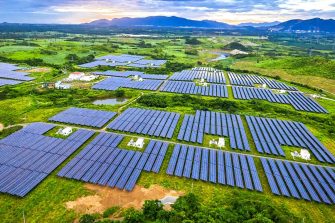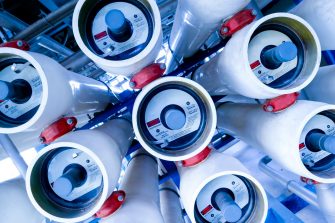Spotting the early signs of liver cancer with AI
How harnessing the power of machine learning for computer vision is changing the way we diagnose, treat and support those in need.

Share this story
Working with medical scans and medicalised data sets, Professor Arcot Sowmya and her team are using artificial intelligence to help solve specific problems impacting communities each day.
Professor Sowmya Arcot at UNSW.
A picture may say a thousand words but for Professor Sowmya, this sentiment is particularly true. Through her ongoing research and its applications across medical image analysis and computer-aided diagnostics, she’s paving the way for improved AI forecasting models of disease and suicide prevention.
This process starts by equipping machines with the capacity to automatically analyse and understand images and video.
“We take the collected data and make sense of it all through designing and employing automated methods, as well as repurposing and extending existing methods. This helps us use data-driven insights to answer disease-related questions.”
- Professor Sowmya
Supported by competitive, industry and government funding, this research has been applied across the broader health area, including biomedical informatics and real-world diagnostics.
Lifting the lid on liver cancer
For those at risk of developing various diseases including liver cancer, Professor Sowmya’s research can mean earlier diagnosis, intervention and treatment. Working alongside colleagues at UNSW's Microbiome Research Centre and Faculty of Science, Professor Sowmya and her team are helping to develop microbial-based biomarkers powered by artificial intelligence for early detection of liver cancer – thereby potentially improving survival rates.
Typically, patients with liver disease would conduct regular blood tests or undergo ultrasound imaging as part of their ongoing monitoring and treatment plans. Professor Sowmya’s work however looks at introducing additional testing methods to determine future patient outcomes.
These include mouth or nasal swabs, which provide the necessary data the team needs to conduct their analysis. “We are trying to discover if there are any easy to detect microorganisms or biomarkers, which are potentially associated with liver cancer,” she explains. “Genetics related data is a whole new world, so we’re studying what’s related and not related to liver cancer.”
Liver cancer is the fifth most common cancer with incidences continuing to increase. Like most cancers, liver cancer typically develops slowly and quietly, without causing any noticeable symptoms in its early stages.
Patients would then repeat these tests regularly to potentially establish or reveal an identifiable pattern. “It all comes down to earlier detection – the earlier you can detect disease, the more warning you have to offer treatment or intervention to either slow it down or provide a cure.”
As this research continues to develop, Professor Sowmya hopes to see it applied where it’s needed most. “It would be really lovely to see the research become usable by the user themselves,” she says.
“If we discover there’s a particular set of biomarkers that help with early cancer detection, we’d like that to become part of the regular tests that patients undergo – or at the very least have it become a recommendation.”
- Professor Sowmya
© 2023 Everymind
Smart cameras that save lives
Professor Sowmya’s research has also branched into other data-rich domains, where similar techniques are making just as significant an impact. This includes the mental health domain, where her research is leading to novel approaches for suicide prevention.
Alongside collaborator, Dr. Mark Larsen and his research group, the team are working on the analysis of data from CCTV footage to identify signs of suicidal distress. “To manually review 24-hour CCTV is very challenging, so what if we could instead automatically identify some of the behaviours before a suicide attempt, so that it could be prevented?” asks Professor Sowmya.
To help identify early warning signs and recognise particular behaviour patterns, the team worked closely with a number of leading psychologists. “Using their insights, we then analysed video footage to identify those specific behaviours,” she explains.
“Once we have that and it’s picked up through the images, we can then raise an alarm for someone to reach out and help the person.”
With the desire to push this research further, Professor Sowmya would like to work towards creating software which can analyse video data to create an automated warning of risky behaviour.
“This could become a product that’s installed in all CCTV cameras in high-risk public places such as train stations or certain outdoor spaces. If it’s made usable at the right time and the right place, the impact could be truly life-changing.”
- Professor Sowmya
Share this story
Read more
Get in touch and see what’s possible.
Ask how we can help your business, industry, or market through collaboration.



